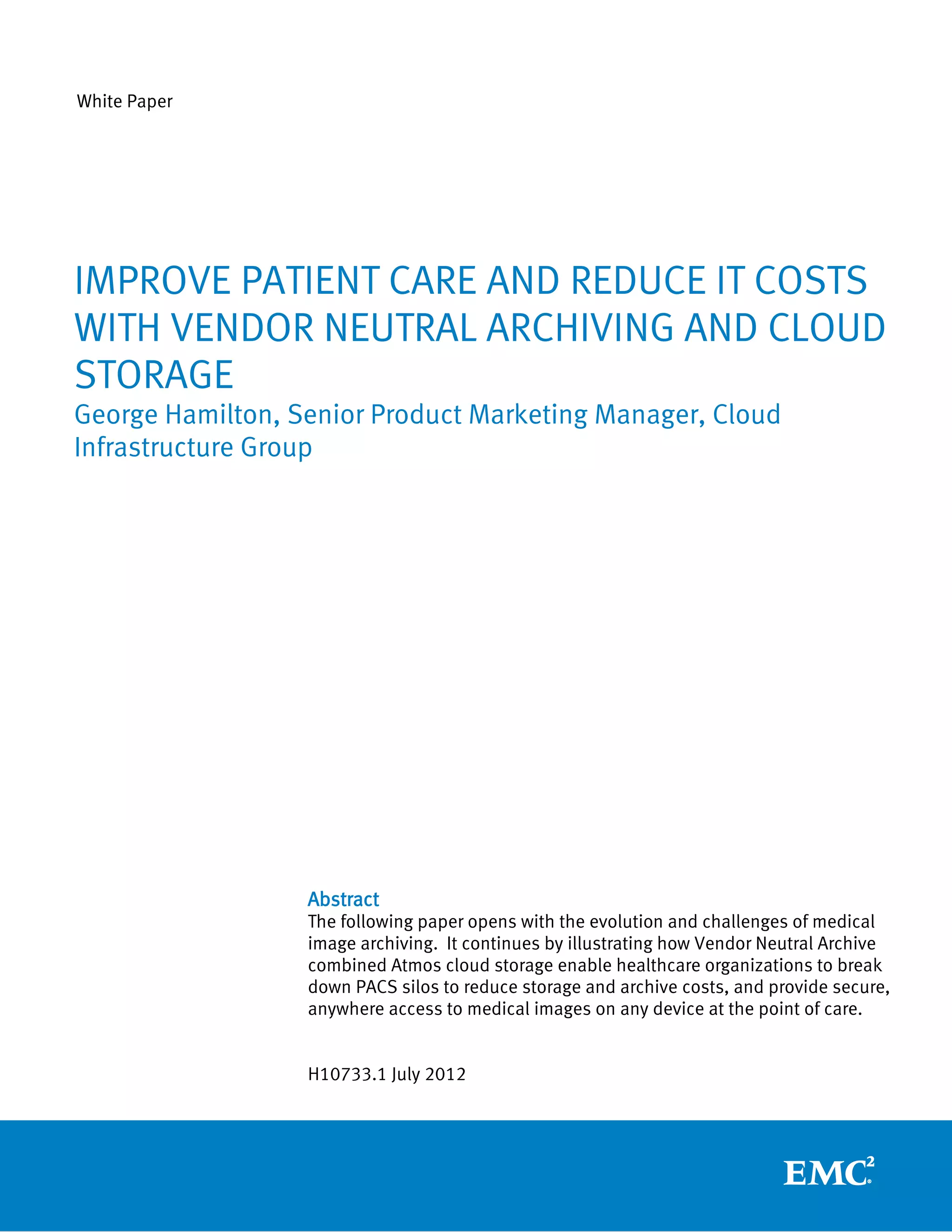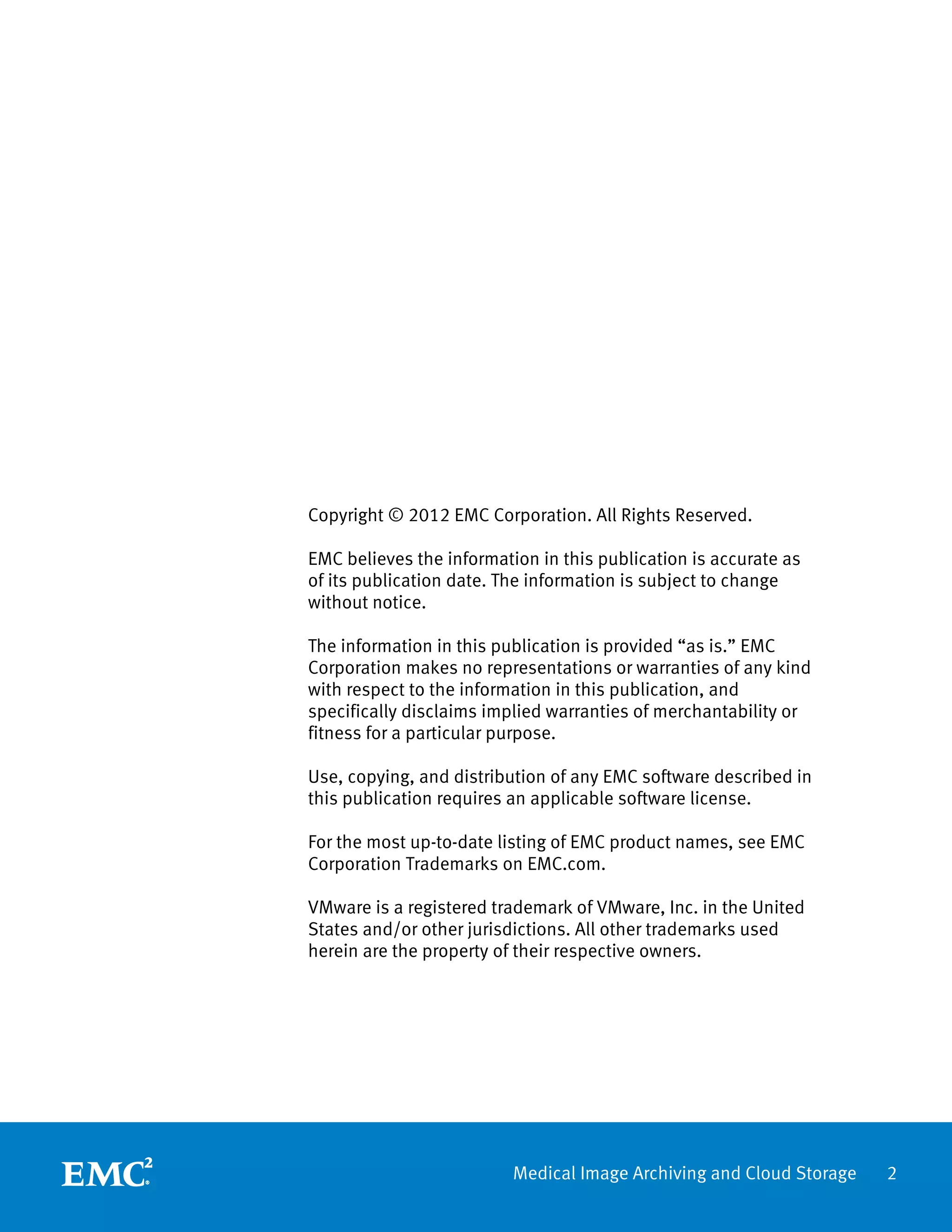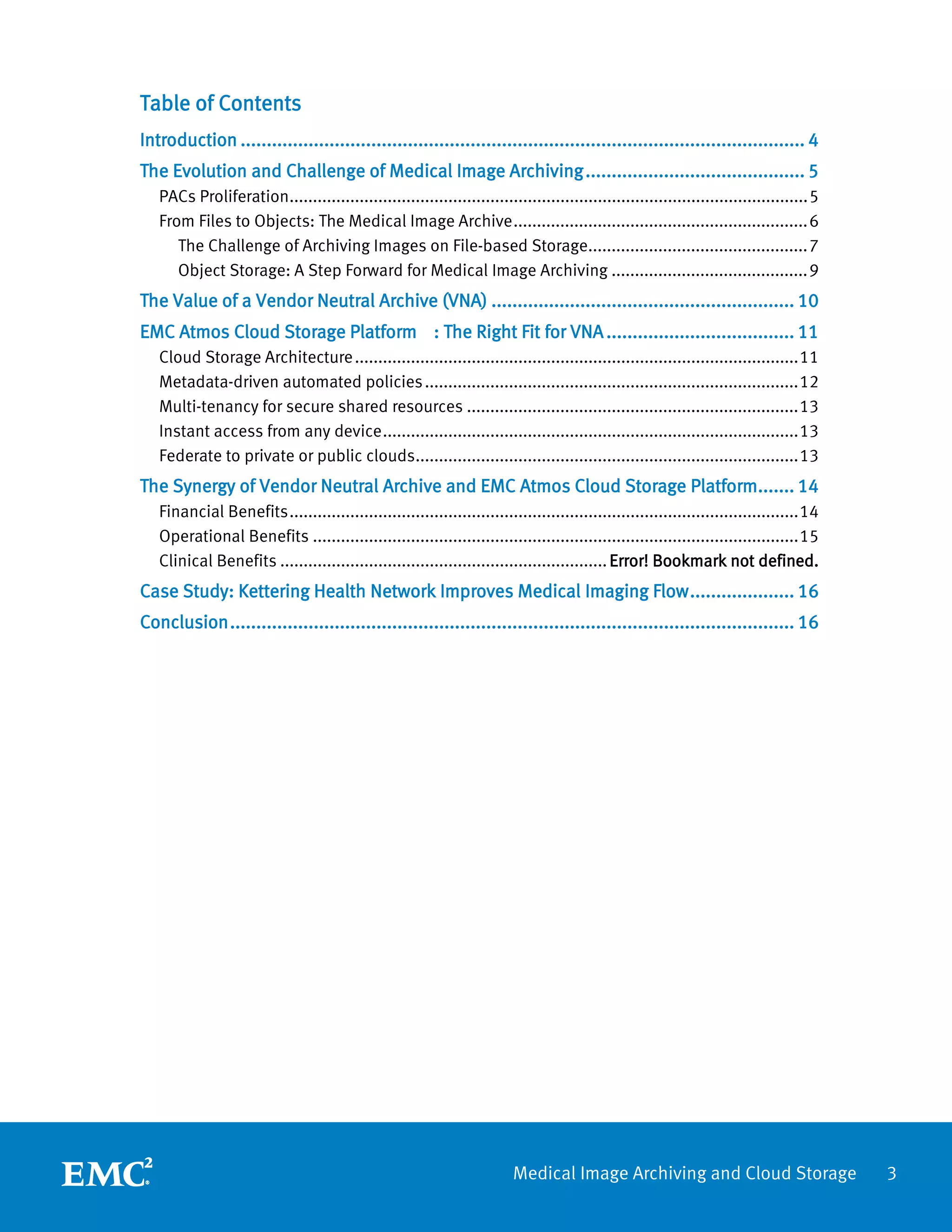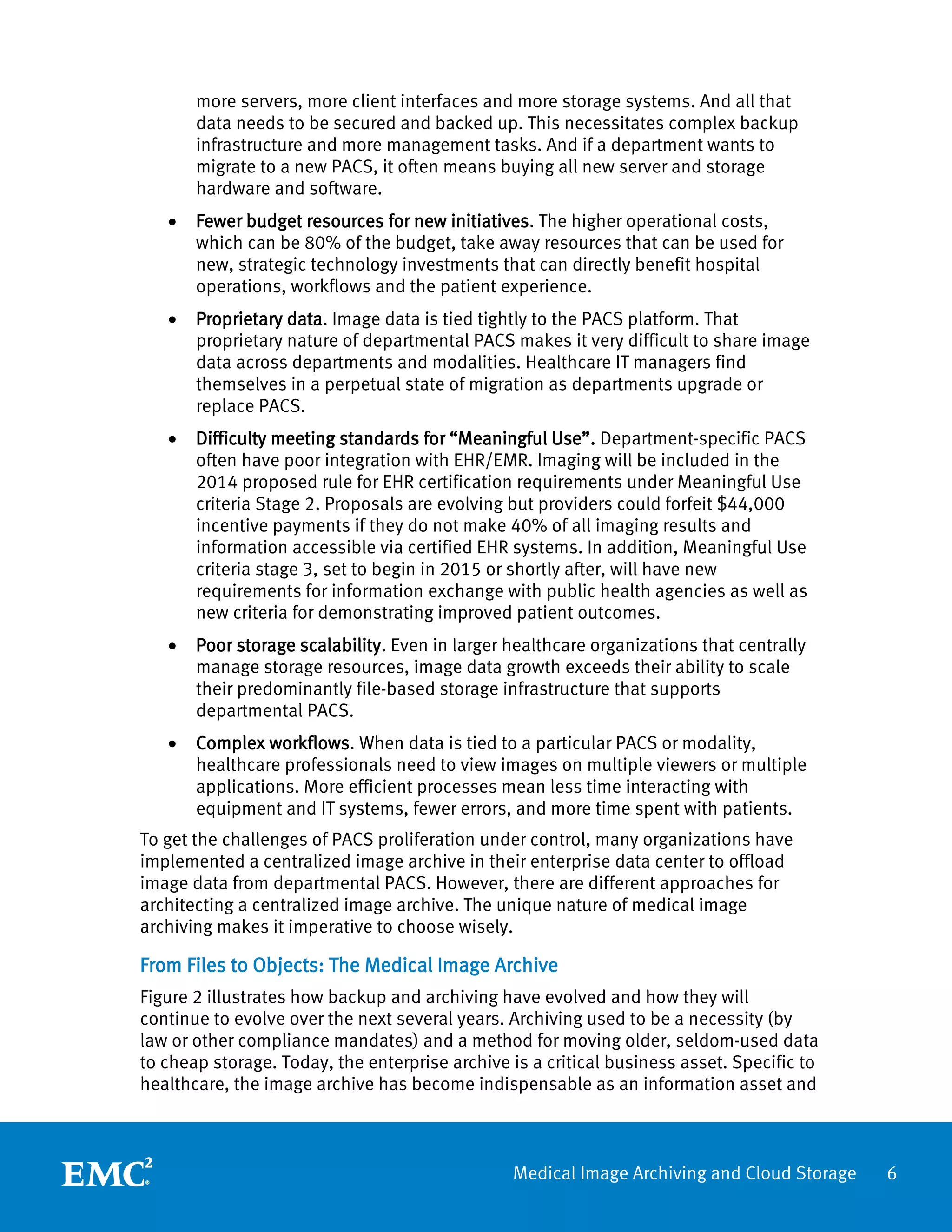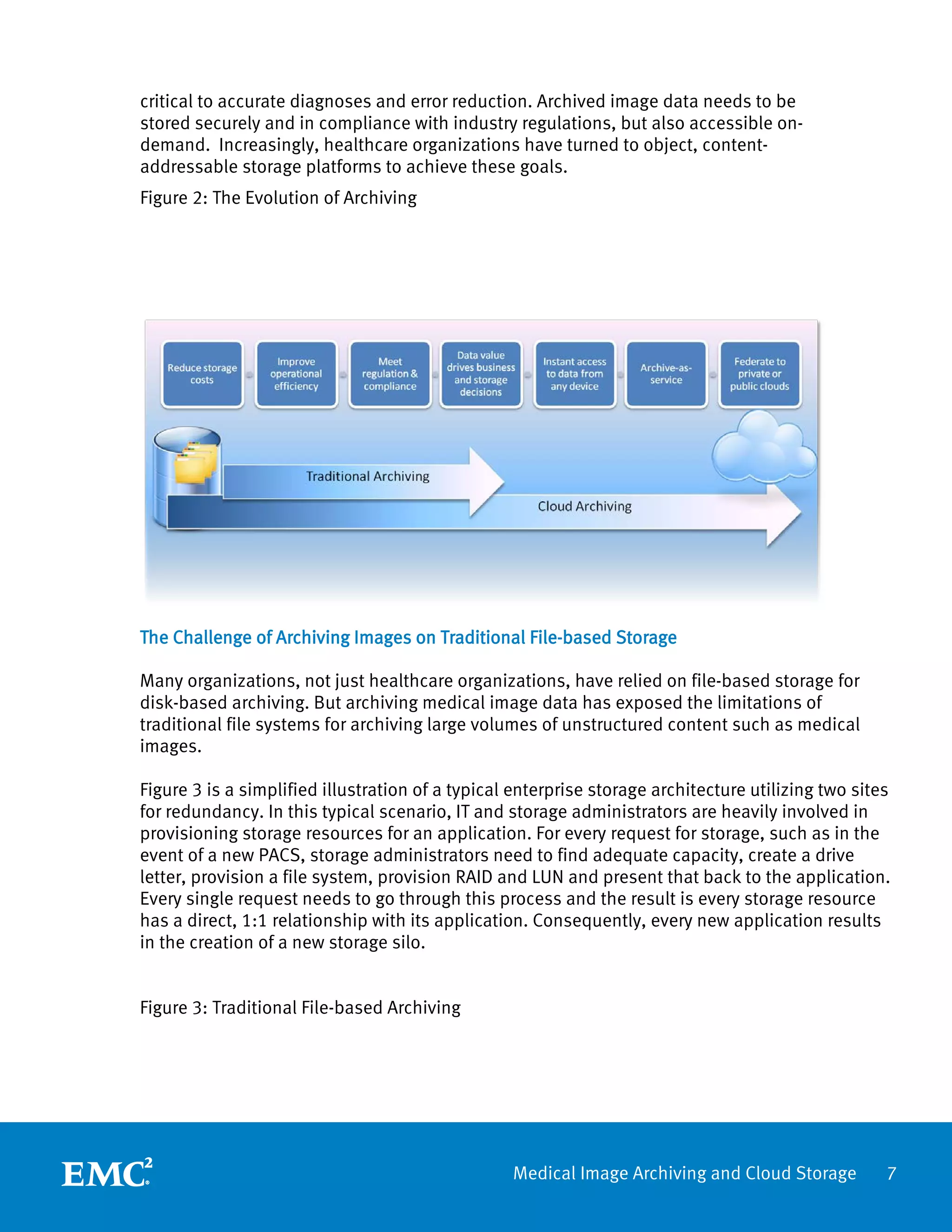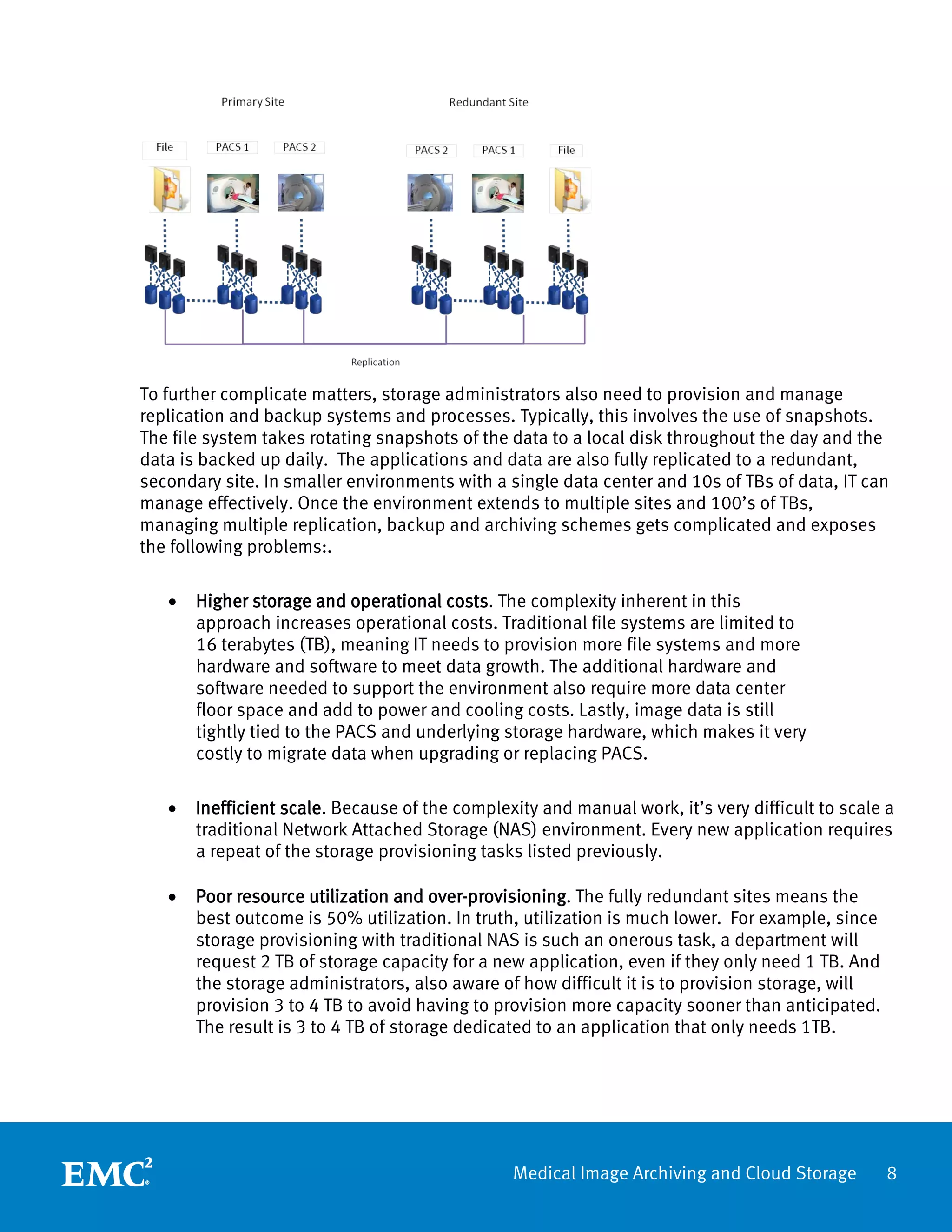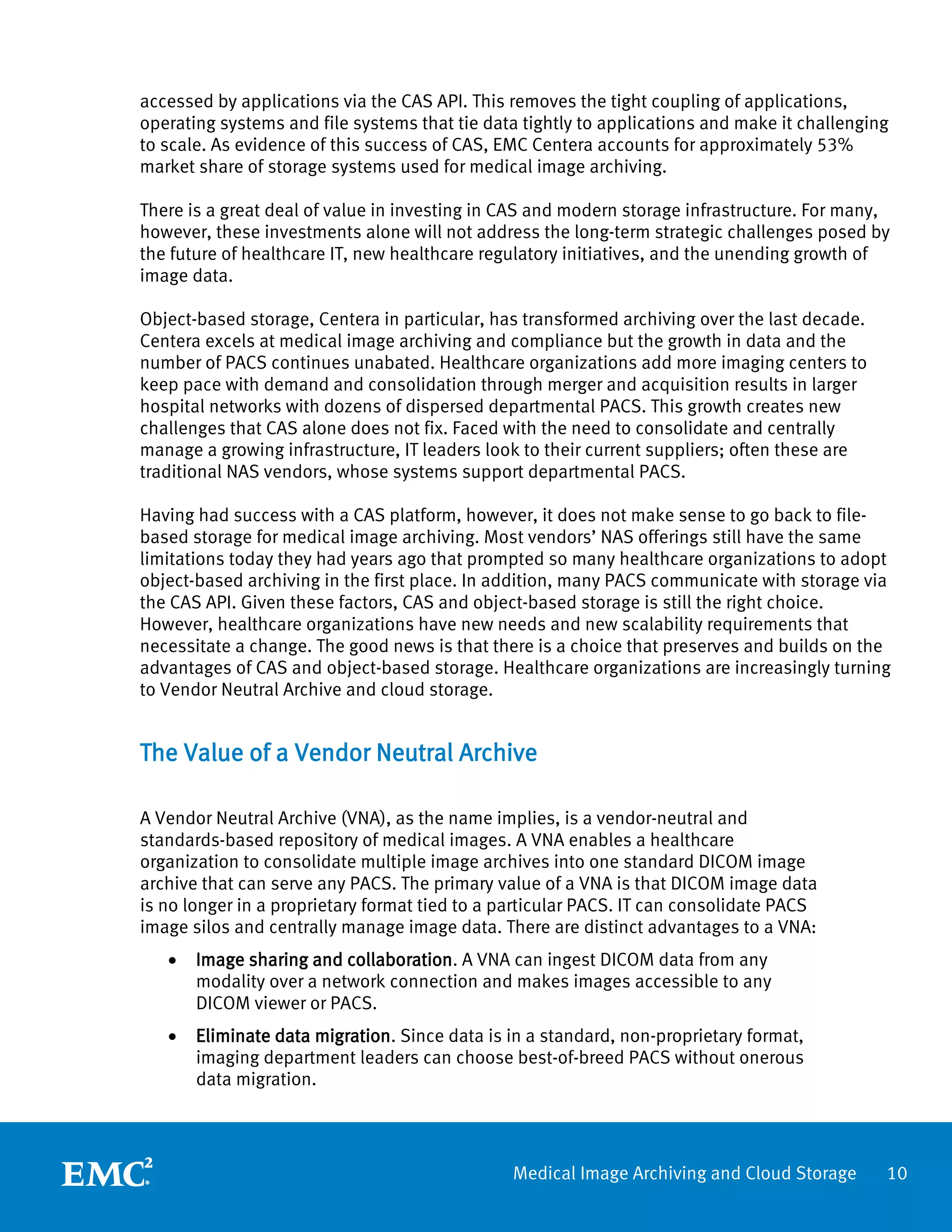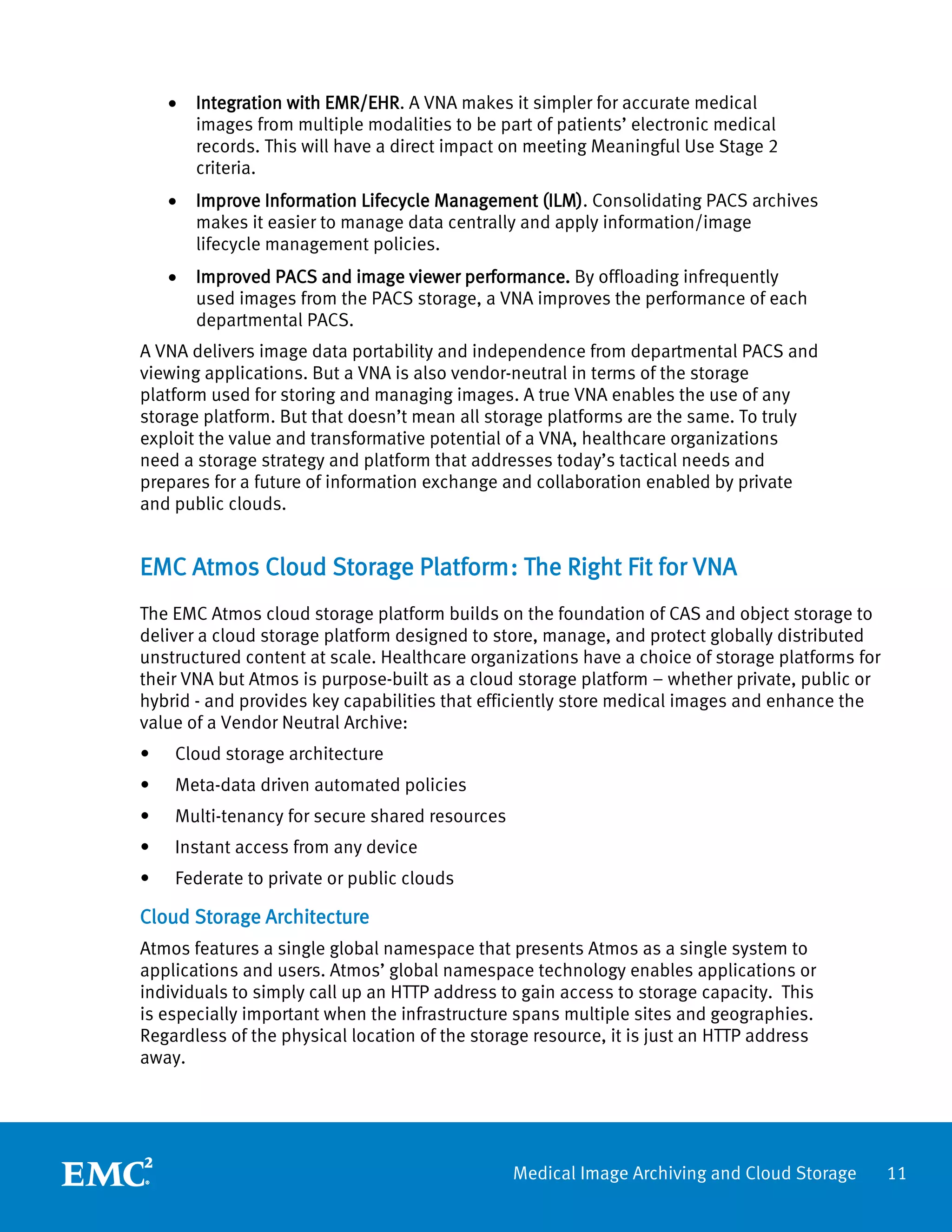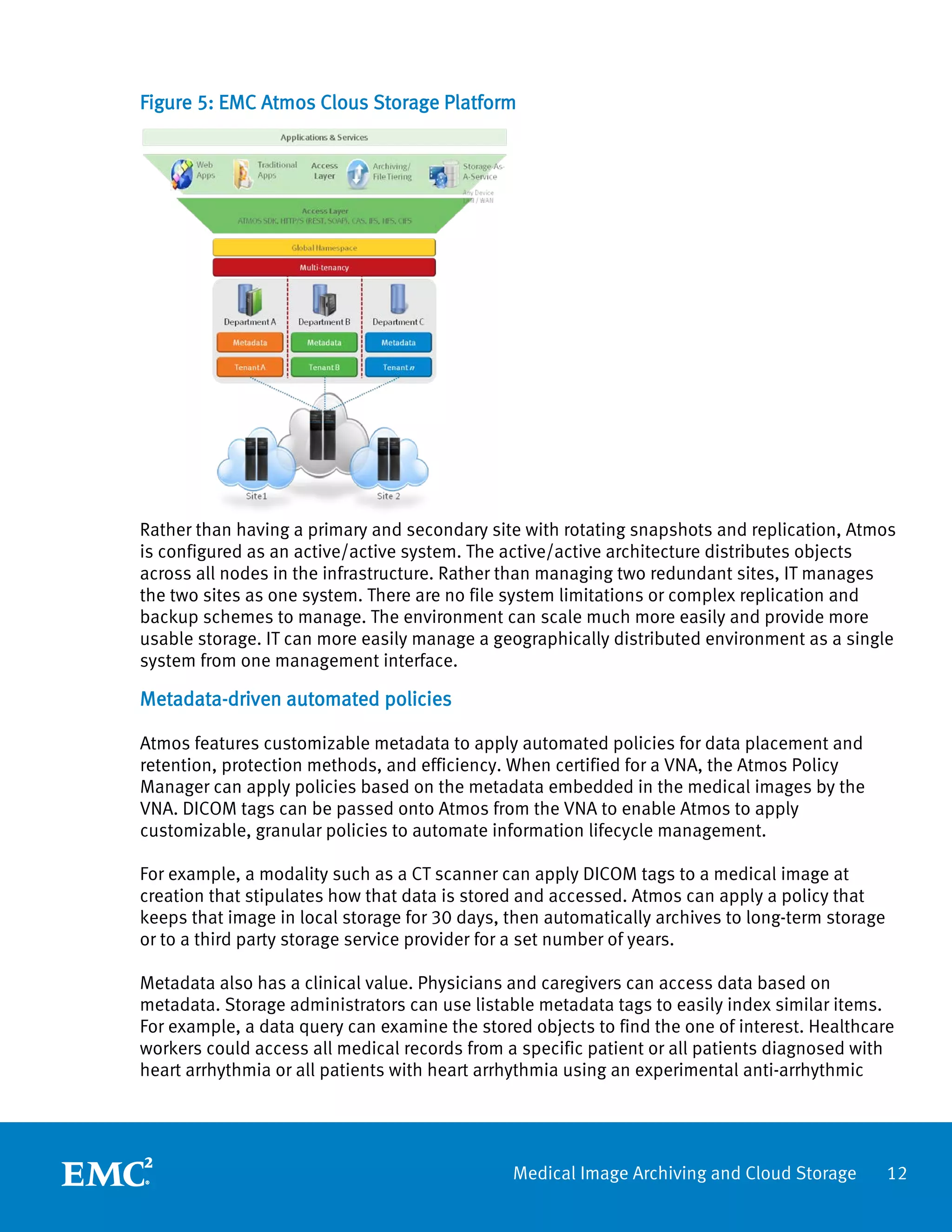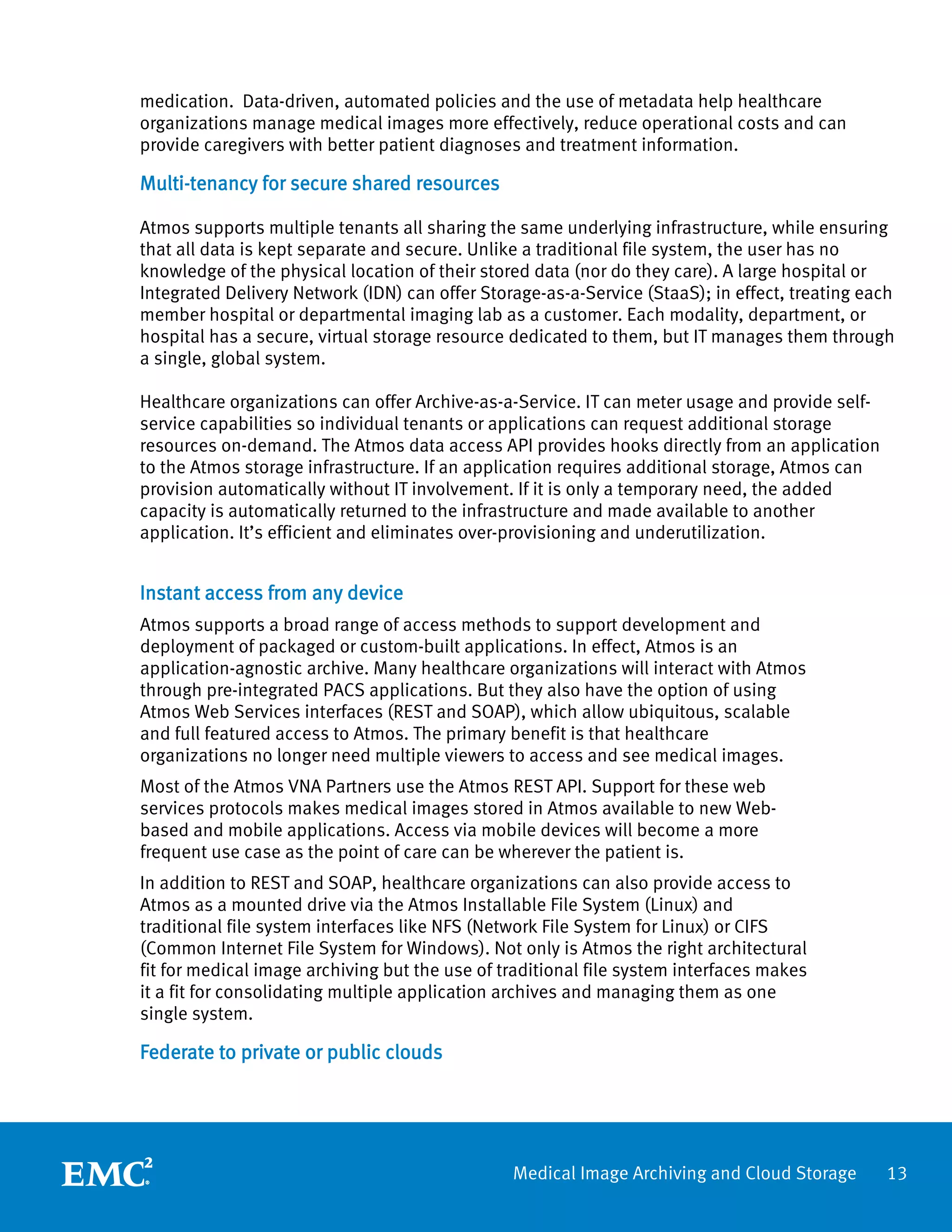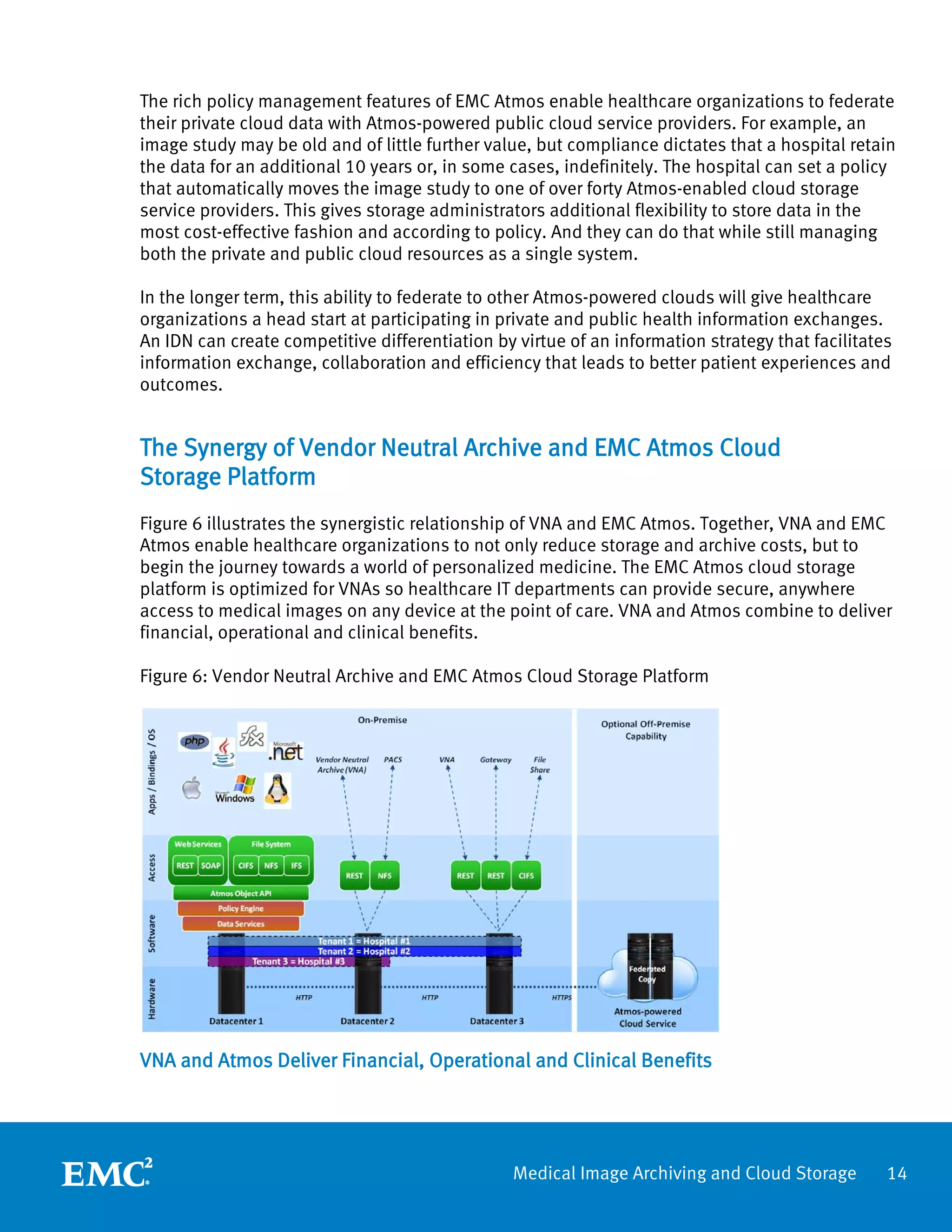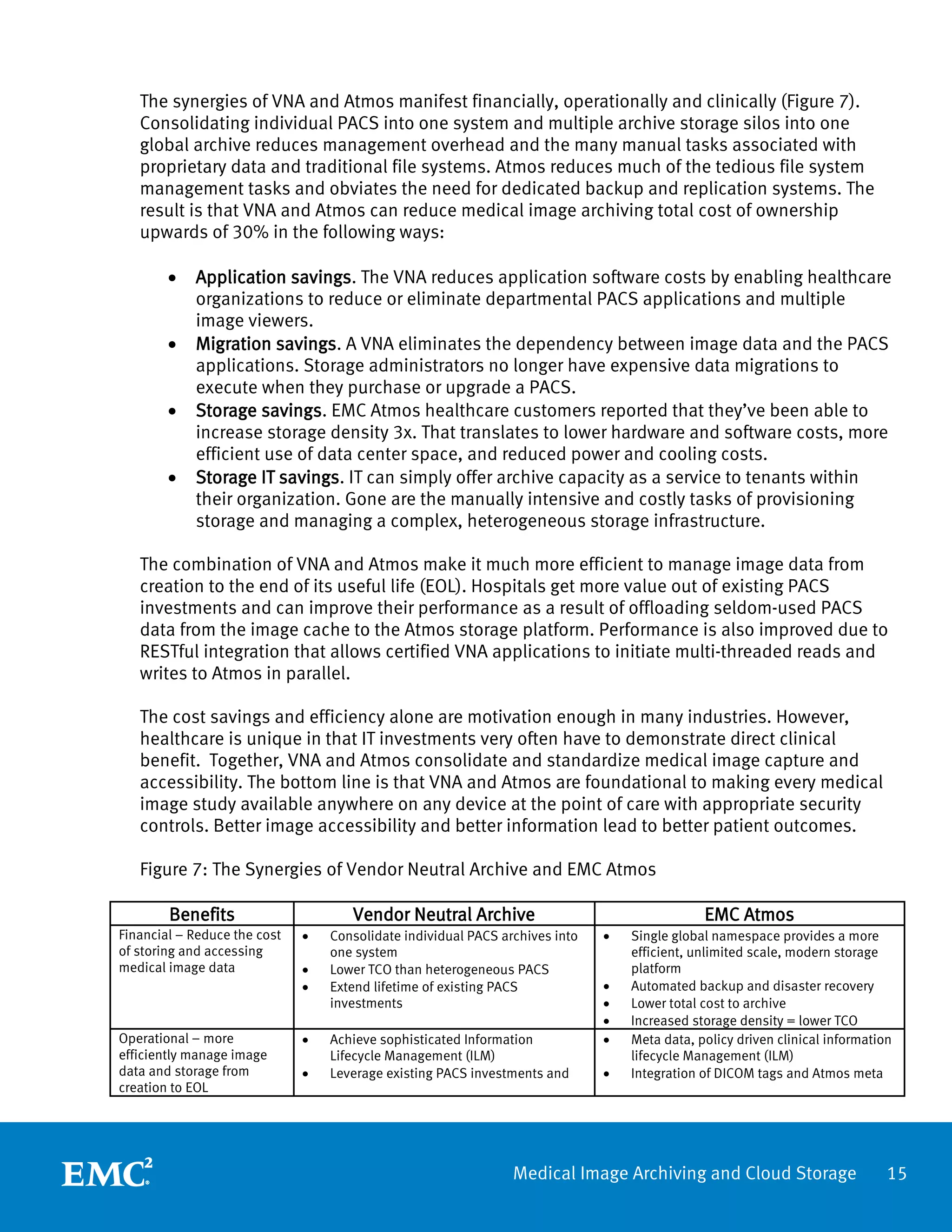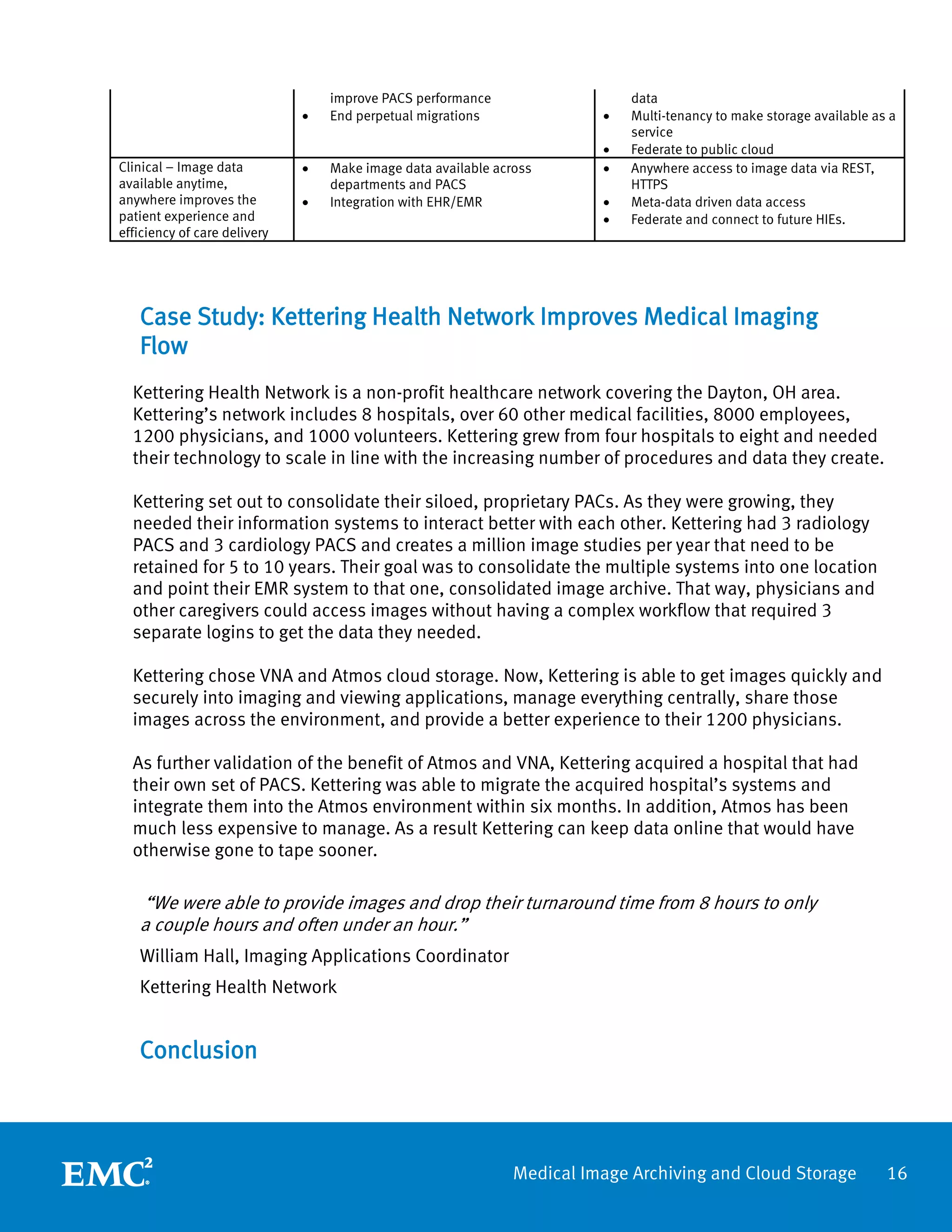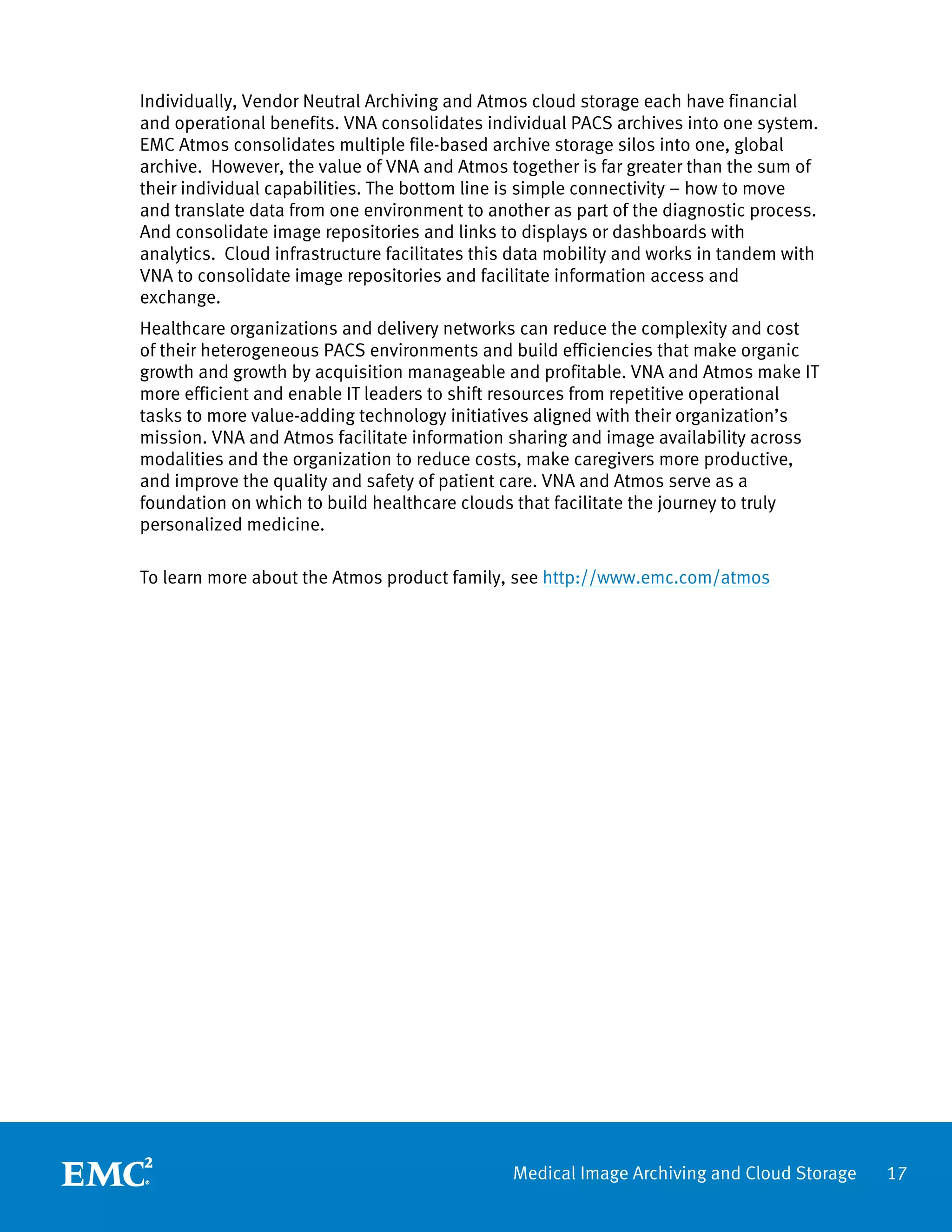This white paper discusses how vendor neutral archiving (VNA) combined with cloud storage on the EMC Atmos platform can help healthcare organizations improve patient care and reduce IT costs. By breaking down PACS silos and providing secure access to medical images from any device, VNA and cloud storage reduce storage and archive costs while enabling images to be accessed at the point of care. A case study is presented of how one healthcare network leveraged this approach to improve medical imaging workflows.
